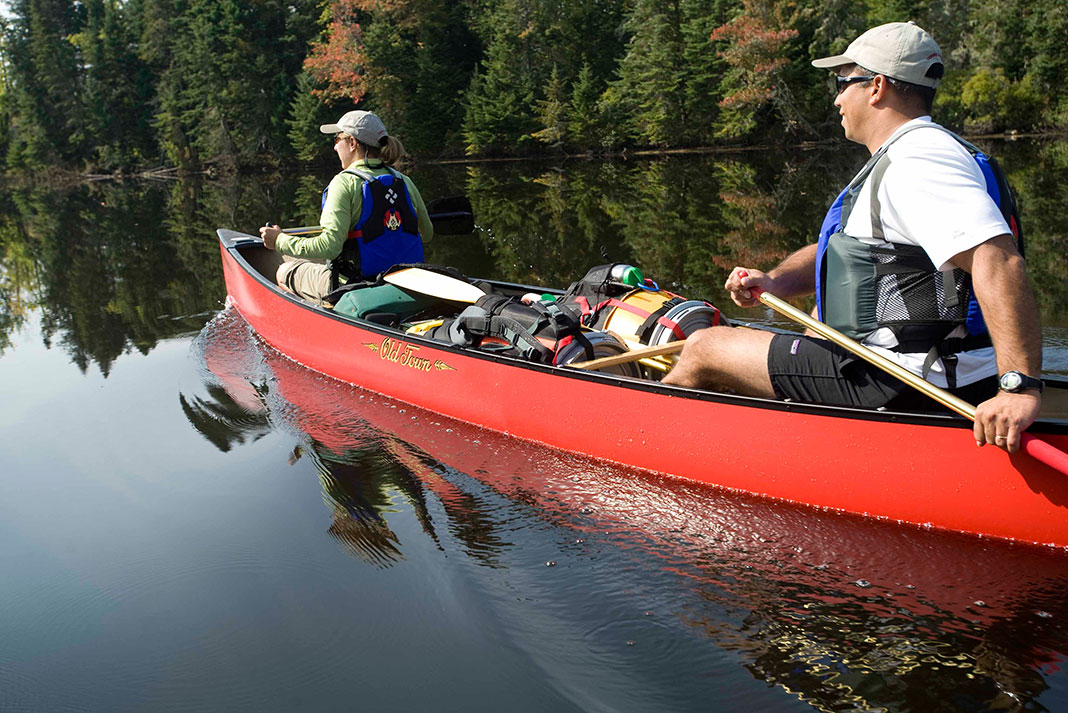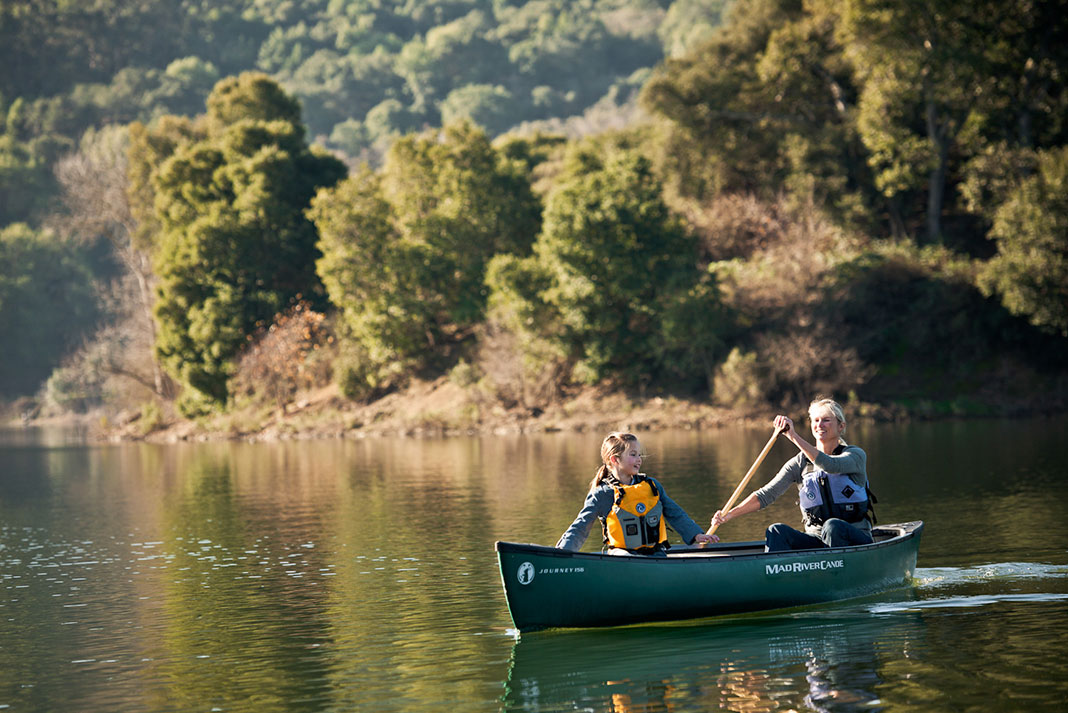After canoeing North America’s lakes and rivers for more than 60 years, author and adventurer Cliff Jacobson has unfortunately seen all the mistakes you can imagine. In his own words, America’s renowned canoeing authority shares seven of the most common—and dangerous—errors he sees on the water.
Most Common Canoeing Mistakes
1 Not scouting ahead
Round the bend of your local river, you might see the dancing horsetails of a rapid you’ve paddled a dozen times before. Don’t be tempted to dismiss scouting and plunge confidently ahead. I’ve done this myself, only to see a sapling blocking the way. We capsized and wrapped the canoe. View the route you’re paddling with fresh, clear eyes, each and every time.

2 Leaving an unsecured canoe
Spend enough time tripping and you’ll be sure to spot an unlucky paddler’s previously beached canoe drift by. In wind or current, and especially in remote areas, a runaway boat is a serious problem. Always secure your canoe overnight and during breaks by tying off the bowline to a tree or other immovable object. If you stop briefly where a tie-up is difficult, string out your bow and stern lines along the ground. If the canoe drifts away while you’re watching, you can make a dash to grab a line.
3 Rushing the journey
Stop when you must and run when you can. If you’re being beaten by a headwind, put ashore to wait it out. Too much focus on keeping to a schedule can lead to bad decision making, exhausting the group—or worse. Paddlers can often make up lost time by paddling longer on nice days, or by paddling in the quiet hours of dawn and dusk.
4 Paddling with an unzipped PFD
Drowning deaths where PFDs are worn properly account for between only two and 13 percent of incidents, according to the Red Cross Society. In the event of of capsizing, swamping or collision with another boat, wearing a PFD properly is your best assurance of returning home.
5 Overloading the canoe
Whether its enthusiastic weekend warriors stacking beer, guitar cases and duffel bags high above the gunwales, cottagers stuffing in too many passengers or experienced paddlers taking home an awkwardly sized trophy, overloading leads to instability and is one of the most common causes of serious river accidents. I’ve had the unfortunate experience of having a found caribou rack caught in a low hanging sapling above a class II rapid. Escape meant cutting the cord that held the rack—and hoping a tine wouldn’t spear me as it rolled out.

6 Incompetent back ferry
Anyone who plans to travel on a wilderness river with a loaded canoe should learn to back ferry effectively. A back ferry allows for moving from one side of the river to the other, and slows the canoe, buying time to evaluate the next obstacle and position the canoe. Boat control is a problem for many paddlers when learning this maneuver, so practice this technique before you need to execute it.
7 Too many loose items
Loose items must be minimized and secured. Not only does this make portages much more efficient, if your canoe capsizes the cleanup is much quicker. Your friends will thank you.
Plan ahead to minimize these mistakes when canoeing far from civilization. | Feature photo: Courtesy of Old Town Watercraft & Accessories




Funny, I’m just re-reading Alec Ross’s book “Coke Stop in Emo” after paddling in Quetico Park. Alec didn’t seem to learn about tying up his canoe. He reported three incidents of having the canoe blown into the water by wind. I wanted to shout at him “Alec, tie it up!”
LOL. Yes I have done the beautiful Quetico twice, each time for over 30 days. One trip was the longest out of Ely for that year. These canoes float away. Never assume they will stay where you left them while you eat lunch or take a leak. Pull them on shore and tip them over. tie them up if possible. It just takes a minute. Can you imagine losing your canoe in the middle of nowhere? Don’t let it happen.. Big flat water seems to be a problem too, I have had it on the Wisconsin River and the Mississippi.
Great list, Cliff. I might add wearing tall rubber boots (that can get stuck in deep mud or fill with water in a capsize.)
II would add to Bruce Jordan’s boot note–just don’t wear any clothing that does not drain everywhere. Early in my paddling days I went down in whitewater and the water filled my 60/40 jacket, which did not drain well and the weight of the water in my jacket pulled me under. (I weighted about 95 lbs at the time) I was lucky enough to get the jacket off. But now I make sure everything will drain. As far as loading the canoe, almost everything should be in water tight bags, and latched to the canoe. You do not want to lose anything if the boat goes down. My basic policy on every trip I make, big or small, is to assume we will go down. Though this has practically never happened, nevertheless It is smart to start with this assumption. Damage control! LOL. And yes, make sure all humans and critters in your canoe have their life preservers zipped up. It is called a life-preserver for a reason. Again–damage control. 🙂
I guess I should add that my policy of packing the canoe assuming we will go down applies to not only securing your gear but also to clothing. Make sure everyone has the proper clothing for the water temperature, dry clothes to change into and food. Don’t risk hypothermia.
Each paddler has their own cell phone (aka emergency device) in a drybag in their own zippered pant pocket. The number of times it’s been suggested we all put our phones, car keys, personal treasures, etc into one group dry bag. If that one bag should sink or get washed away, we too are sunk.